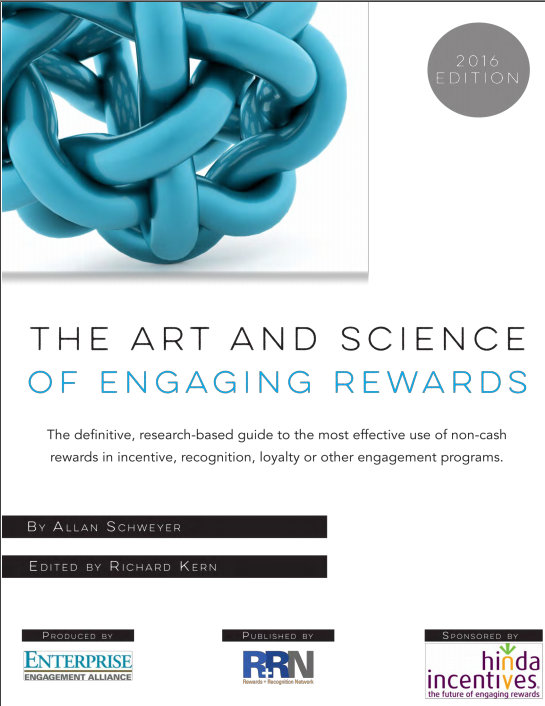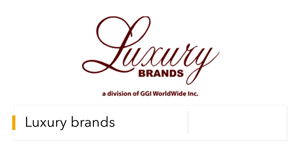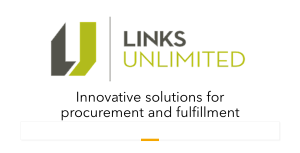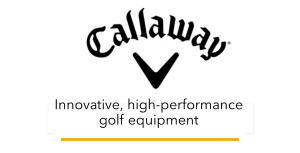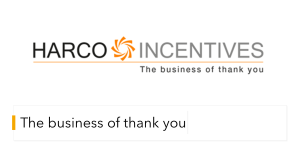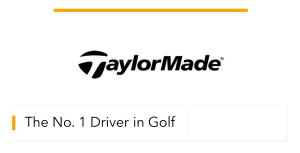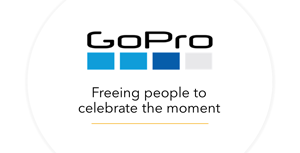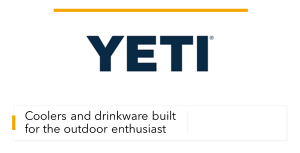RRN Launches eBook Campaign to Promote Program Design, Reward Science
At the recent Rewards & Recognition Expo in Chicago, nearly all attendees at a plenary session agreed that most incentive, recognition and loyalty programs fail to conform to the best practices revealed by almost 20 years of research from dozens of independent sources. As a result, RRN at RewardsRecognitionNetwork.com is launching an ongoing education program in conjunction with the Enterprise Engagement Alliance at TheEEA.org to help incentive, recognition, loyalty and related suppliers educate their customers on effective program design and reward selection.
“Since the Incentive Federation and SITE Foundation began producing research in the 1970s and 1980s – and later the Forum for People Performance Management at the Medill School of Northwestern University, the Incentive Research Foundation and the Incentive Marketing Association – a wide variety of studies have demonstrated the efficacy of properly designed incentive, recognition and loyalty programs and personalized, memorable rewards,” explains Bruce Bolger, President and Founder of the Enterprise Engagement Alliance. “Unfortunately, based on discussions with many incentive, recognition and loyalty company principals and their corporate clients, and reviewing the incentive, recognition, loyalty and promotional programs prevalent in the marketplace, most ignore the fundamental principles of effective design.”
According to Bolger, “most but not all incentive, recognition and loyalty programs overlook the importance of driving the performance of the middle 60% and instead focus only on the top 20%, and many fail to integrate and align the many levers of engagement required to connect engagement to actual behaviors and performance outcomes.” Bolger believes companies have traditionally looked at incentives, recognition and loyalty programs as quick fixes, or as a competitive necessity, because they don’t feel confident that results can be measured and because the field of engagement isn’t taught in colleges or covered in most business media. In fact, he asserts, “ask the solution providers transitioning to engagement, and all will say that they still face many clients who have no interest in science and program design and just want to buy a bright shiny object they hope will achieve a short-term goal. They think: Why should I complicate a sale if the client wants a quick fix? The president of one leading recognition company told me off the record that very few salespeople in this field have the clout or courage to challenge customers.”
Ground-Breaking Research
Bolger notes that very few companies are even aware of the ground-breaking Incentive Research Foundation study, The Master Measurement Model, (produced by the American Productivity and Quality Center over 25 years ago) that still provides the best template for effective program design. It prescribes a process that combines outcomes and process measures, a method to weight the value of results and behaviors, and a method for assigning return-on-investment of outcomes. “The study is easy to find; yet most people don’t use it,” he says, “and as a medium, rewards and recognition don’t get the respect of other management and marketing disciplines.”
Bolger adds: “Not only do many programs fail to follow best practices in the design process, ironically, just as many fail in terms of reward selection and presentation. Anyone who reviews the research summarized in the eBook, The Art and Science of Engaging Rewards, will see that reward selection and presentation is just as scientific, creative and even more important, perhaps, than the billions of dollars spent by marketers in media selection. Think of it. Companies pay consultants high fees to select between ad campaigns in Vogue or Cosmopolitan, but often give little thought to rewards shipped to their most loyal customers or employees in terms of how they’re promoted, selected, shared and presented. More thought is given to the selection and presentation of a holiday present for our friends than most organizations give to crafting a reward experience for top customers and performers.”
Bolger says that conversations with attendees at the R&R Expo, many of whom represent leaders in the field, revealed that most programs are in fact cash equivalents – i.e., relatively little thought is given to how the rewards are selected, merchandised in the catalog, customized and personalized for delivery, or otherwise crafted to have the maximize emotional impact or create the most social buzz. “A fundamental finding from multiple research projects is the importance of distinguishing between cash and recognition,” he says. “Many programs fail in that regard, leading to reward addiction and counter-productive behaviors.”
How could so many years of research be overlooked? “Based on multiple off-the-record interviews at the R&R Expo,” Bolger explains, “most solution suppliers don’t actively sell the science and reward experience. Most clients don’t respect the process of program design and don’t want to pay for it, or for what can be done to maximize the reward experience. Clients simply aren’t convinced of the science, and salespeople often are reluctant to complicate the sale.”
Education and Outreach
To help address this educational challenge, RRN has engaged its partner company, the Enterprise Engagement Alliance, and the not-for-profit Enterprise Engagement Academy to upgrade the first edition of The Art and Science of Engaging Rewards into a regularly updated resource designed to give industry solution-providers and corporate practitioners access to all the latest, most authoritative research and incorporate the findings into program and rewards design. It is written in a way that combines the resources with insights planners need to create both artful and scientific programs that foster sustainable emotional bonds through authenticity.
“The industry has the research and certification programs for recognition from Recognition Professionals International, incentives from the Incentive Marketing Association and engagement from the Enterprise Engagement Alliance,” says Bolger. “Now that the power of engagement and rewards & recognition are validated, it’s time for solution providers and practitioners to embrace these resources to challenge customers.” He explains how this translates into change: “There’s an old saying in business that ‘Nothing happens until somebody sells something.’ When the EEA first launched, many thought it unrealistic that a small organization such as ours could help create a formal field. Now here we are eight years later with major investors recognizing the importance of formal engagement practices, and the world’s most respected standards organization, ISO (the International Organization for Standardization), considering formal engagement standards – and the EEA is the project leader for creation of those standards.”
Bolger continues: “Regardless of whether the EEA contributed to the emergence of a formal engagement field, if the rewards and recognition industry works together to utilize the great resources provided by the IRF, the IMA, RPI, the Incentive Federation, the EEA and others, it’s only a matter of time before solution-providers and their customers begin to demonstrate greater respect for program design capability and reward experience management. These are skills for which very few companies are currently willing to pay anything, except when it comes to entertaining entertainers, athletes, or the business or political elite. When organizations wake up to the importance of all their people – customers, distribution partners, employees, vendors and communities – and the degree to which their engagement is connected to sustainable performance, they’ll understand that these relationships require the same level of care and expertise.”
How will the impact of this effort be measured in three to five years? Bolger feels that “we will see a far greater percentage of programs focused on using scientific program design and analytics created and implemented by highly knowledgeable and experienced professionals valued for their insight, creativity and ability to deliver bottom-line results to their organizations.”
For more information, contact
Nick Gazivoda
914-591-7500, Ext. 238


